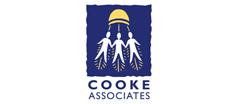Straight Line and Projectile Motion
Some of the content here provides a bridge from the core GCSE work on velocity and acceleration and the associated graphs, moving on to Newton’s laws of uniformly accelerated motion. When the SUVAT equations are introduced to students it is common for them to see this as ‘new’ physics rather than just the application of the definitions of velocity and acceleration together with the graphs that they are familiar with (and the associated gradients and areas under them). As a teacher, you may wish to spend some time showing that these equations have come from what they already have studied and feel comfortable with.
When studying motion it is common for students to muddle and merge speed, velocity and acceleration into ‘movement’ and not adequately differentiate between them and it is worth considering this question with respect to your own class before you develop the ideas here. The EPSE project from the University of York has some simple but valuable diagnostic questions on motion that could be used as part of lesson sequence to help you as a teacher identify prior understanding in this topic before you move on. The materials are available HERE
This collection has some some classic physics demonstrations here with plenty of tips about how to set them up and get the most out of them.
Whilst this list provides a source of information and ideas for experimental work, it is important to note that recommendations can date very quickly. Do NOT follow suggestions which conflict with current advice from CLEAPSS, SSERC or recent safety guides. eLibrary users are responsible for ensuring that any activity, including practical work, which they carry out is consistent with current regulations related to Health and Safety and that they carry an appropriate risk assessment. Further information is provided in our Health and Safety guidance
Episode 205: Describing Motion
Originally written as introductory work on kinematics for AS physics students, this set of linked activities from the IOP is ideal for really pushing and challenging GCSE students towards the end of this topic. The activities and experiments described here are straightforward to carry out but when used in conjunction with the notes provided they will certainly develop your students' skills. Teachers will appreciate the well written questions that come complete with worked answers.
Pearls of Water
This is a lovely demonstration and it’s likely to be one of the most memorable demonstrations your students will see. The film gives full and clear instructions and there’s an accompanying teacher sheet that can be referred back to if required for more detail. Although the demo is a bit fiddly to set up the finished article is beautiful and really good for explaining the independence of vertical and horizontal motion – there’s nothing like seeing something with your own eyes. Ideally, a technician can set it all up before the lesson and the teacher can just enjoy it!
The Physics of Spin in Sport
Definitely not for the academically weak, this interactive web-based resource will push the most able GCSE students if managed well by teachers. Some of the screens take a while to load and many of the equations and graphs look intimidating but don’t be put off, there’s always something that more able students will be able to understand. Hopefully it will also whet their appetite for further study.
SCISP Students’ Manual 4: Interactions and Change
This resource is recmomended in conjunction with the teacher's guide below.
Older teachers will find this resource reminiscent of the text books they used at school! However, chapter four is a really interesting take on changes in motion and is worth looking through. The investigation recommended is investigation 8.4 on page 57 of the pdf document. This mathematical treatment of rocket propulsion will suit some able students down to the ground and they may find it helpful to complete the calculations using a spreadsheet. Others will need more support since it is quite demanding conceptually. With these students it might be sensible to give them to the data for the speed of the rocket and get them to plot it against its mass. Challenge them to explain how the decreasing mass has caused the increase in speed.
Monkey and Hunter
There are some teacher notes to accompany this video demonstration but you’re unlikely to need them as the film shows you everything you need to know. It’s one of the classic demonstrations in physics but it's fiddly to set up so you might be forgiven for showing the students version of the film rather than having a go yourself. Either way, it’s superb because it’s counter-intuitive for most students and this cognitive conflict will really make them think. Stop the film part way through the 1/12 slow motion section and ask students to discuss how fast the bullet is falling and how fast the monkey is falling.
Rockets and Projectiles
These notes accompany this resource and the "Rocket Science Activities" resource below.
It’s hard to beat rockets for generating enthusiasm in the classroom and they are particularly good at really bringing the suvat equations to live.
Here are two similar resources; one from the UK’s Science Enhancement Programme and one from NASA
Allow yourself enough time to look through the SEP booklet properly because it contains a wealth of ideas and resources to get your students not just launching rockets but using equations to work out all sorts of information about them.
The NASA booklet is similarly long. You may find the history section at the beginning useful background and teachers may appreciate the explanation of how rockets work even though it goes way beyond the GCSE specification. For classroom activities jump to page 34 (pdf document page 40) and the experiments with rockets starting on page 91 are recommended.
High pressure rockets are fantastic for teaching the equations of motion and anything to do with projectiles - or rockets obviously!
Several rockets kits are available:
• The IOP compressed air rocket is made from easily available plumbing parts and will launch rockets a considerable distance (over 100m) from any launch angle. You could book yourself onto one of their make and take courses via this website
• The mindsets rocket factory kit is equally good and is also powered by compressed air. It comes ready made but of course there’s a cost attached. It only launches vertically unless you have an adapter (as shown in these resources)
• Not so dramatic are the water rockets which are cheaper to buy but don’t go so high. Use them in the summer when you don’t mind getting wet. They are readily available from many toy stores.
If students measure the duration of the flight then the time taken to reach the maximum height is half this time – subject to a few assumptions! You can find the launch speed using v = u +at (v = 0, u = launch speed, a = -9.8 and t = half measured time). Go on to find the height reached using s = ut + ½ at2.
Rocket Science Activities
From NASA, these activities look at the scientific, technological, engineering and mathematical foundations of rocketry to provide exciting classroom opportunities for authentic hands-on experimentation. See notes above for more details and ideas about rockes in lessons.
Astronauts on 'Space Walk' from the International Space Station
Lovely short clip to slot into a lesson. It shows an astronaut emerging from the Quest airlock on board the International Space Station







